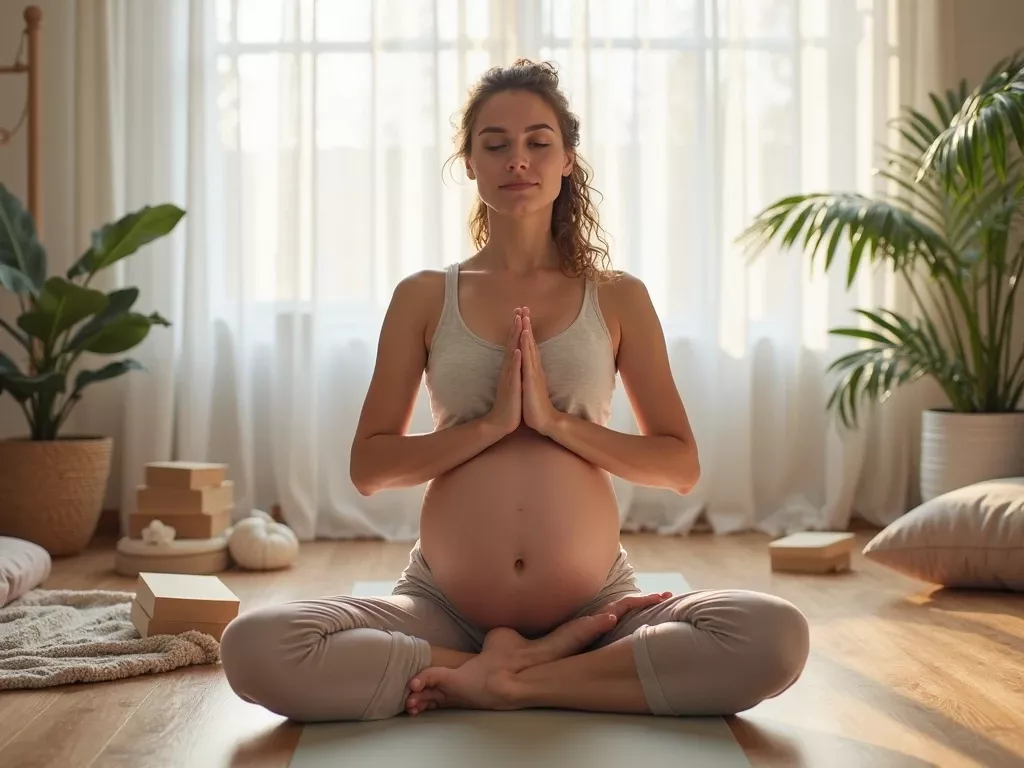Yoga is widely recommended for pregnant women because it promotes strength, flexibility, relaxation, and emotional balance.
However, during pregnancy — especially as your body changes rapidly — not all yoga poses are safe.
Some positions can place pressure on the abdomen, strain the lower back or pelvic floor, or restrict blood flow, all of which can potentially harm you or your baby if not properly modified.

This comprehensive guide explores which yoga positions are unsafe during pregnancy, why they’re potentially risky, and how to adapt your practice for safety, comfort, and empowerment.
🤰 Why You Need to Modify Yoga During Pregnancy
As your baby grows, your body experiences a wide range of changes:
-
Hormonal shifts (like increased relaxin) soften ligaments and joints
-
Postural changes can strain the spine, hips, and pelvic area
-
Increased blood volume and body temperature affect circulation and balance
-
The growing uterus places pressure on the diaphragm and pelvic floor
While yoga can relieve many discomforts, practicing without proper knowledge can cause unnecessary strain or injury.
Therefore, it’s essential to know which poses are best avoided or modified.
🚫 Yoga Poses That Are Generally Unsafe During Pregnancy
Here are the most commonly advised poses to avoid or significantly modify during pregnancy:
1. Deep Closed Twists
Examples: Revolved Triangle (Parivrtta Trikonasana), Revolved Side Angle
-
Risk: Compresses the uterus, restricts blood flow to the fetus, and twists the spine too deeply.
-
Alternative: Try open twists — twist from the shoulders with hips squared forward and baby space preserved.
2. Intense Backbends
Examples: Full Wheel (Urdhva Dhanurasana), Camel (Ustrasana, deep version)
-
Risk: Overextends the spine and abdominal muscles, increasing the chance of diastasis recti (ab separation).
-
Alternative: Supported Bridge Pose with a block or a gentle upward dog with bolsters for support.
3. Lying Flat on the Back After the First Trimester
Examples: Savasana, Supta Baddha Konasana
-
Risk: Can compress the inferior vena cava, a large vein that carries blood to your heart. This can cause dizziness, nausea, and reduced oxygen to the baby.
-
Alternative: Lie on your left side with a bolster between the knees for relaxation and circulation support.
4. Full Inversions
Examples: Shoulder Stand (Salamba Sarvangasana), Headstand (Sirsasana), Handstand
-
Risk: Balance issues may lead to falls; blood flow to the brain and uterus can be disrupted; internal pressure may strain the abdomen.
-
Alternative: Legs-Up-The-Wall (Viparita Karani) with support or gentle supported bridge for the same restorative benefits.
5. Belly-Down Poses (Prone Position)
Examples: Cobra, Locust, Bow Pose
-
Risk: Direct pressure on the belly, especially after the first trimester, which can be uncomfortable and unsafe.
-
Alternative: Do sphinx pose with extra padding, or shift to all-fours positions like cat-cow.
6. Strong Core Engagement or Crunches
Examples: Boat Pose (Navasana), Sit-ups
-
Risk: Engaging rectus abdominis (the “six-pack” muscles) may increase the risk of diastasis recti.
-
Alternative: Gentle pelvic tilts, transverse abdominis engagement, and core breathwork are safer ways to strengthen the core.
7. Hot Yoga / Bikram Yoga
-
Risk: Pregnancy increases your internal temperature; heated environments can lead to overheating, dehydration, and fainting.
-
Alternative: Practice in a well-ventilated, cool room. Stay hydrated and rest frequently.
✅ Poses That Are Safe and Supportive During Pregnancy
Pregnancy yoga should be gentle, grounding, and focused on opening the hips, releasing the back, and connecting with breath and baby.
| Pose | Benefits |
|---|---|
| Cat-Cow (Marjaryasana-Bitilasana) | Improves spinal flexibility, relieves back tension |
| Wide-Legged Child’s Pose | Opens hips, supports digestion, calms the nervous system |
| Goddess Pose (Utkata Konasana) | Strengthens pelvic muscles, prepares for labor |
| Supported Warrior II / I | Builds stability and endurance, great for posture |
| Side-Lying Savasana | Safe final relaxation that relieves pressure on the vena cava |
🧘♀️ Use props like bolsters, blocks, straps, and blankets liberally for support, safety, and comfort.
🕰️ Guidelines by Trimester
First Trimester (Weeks 1–13):
-
Avoid intense heat, breath retention (kumbhaka), and deep twisting.
-
Focus on gentle flow, stability, and breath awareness.
-
Fatigue is common — listen to your energy levels.
Second Trimester (Weeks 14–27):
-
Your belly begins to show — avoid belly-down poses.
-
Practice side-lying and supported standing poses.
-
Balance may begin to shift — use walls or props as needed.
Third Trimester (Weeks 28–40+):
-
Avoid long periods standing or lying flat.
-
Focus on hip-opening, gentle stretching, and restorative poses.
-
Incorporate pelvic floor awareness and birth-prep breathing.
🙋 Frequently Asked Questions
1. Is yoga completely safe throughout pregnancy?
Yoga is generally safe when modified properly. However, you should consult your doctor before starting if you have complications such as preterm labor history, placenta previa, or high-risk conditions.
2. Can I continue my regular yoga class while pregnant?
It depends. If your teacher is prenatal-certified, they can guide modifications.
Otherwise, consider switching to prenatal yoga classes or practicing at home with pregnancy-safe videos.
3. How often should I practice yoga during pregnancy?
2–4 times per week is a good rhythm. Even 15–20 minutes a day can offer significant physical and emotional benefits.
4. What should I absolutely avoid in yoga while pregnant?
-
Breath-holding
-
Deep backbends or forward folds with pressure on the belly
-
Overstretching
-
Anything that makes you dizzy or breathless
🌟 Final Thoughts

Yoga is a wonderful companion to pregnancy — supporting your changing body, calming your mind, and preparing you mentally and physically for birth.
But it must be approached with mindfulness and caution. Not all poses are safe, and each trimester requires different considerations.
The key is to listen to your body, avoid risky positions, and focus on poses that create openness, relaxation, and connection with your baby.
Pregnancy is not a time to push your limits — it’s a time to honor your body’s wisdom and move with compassion.
“Your body is growing a life. Yoga is here to support that journey — gently, lovingly, and safely.”



